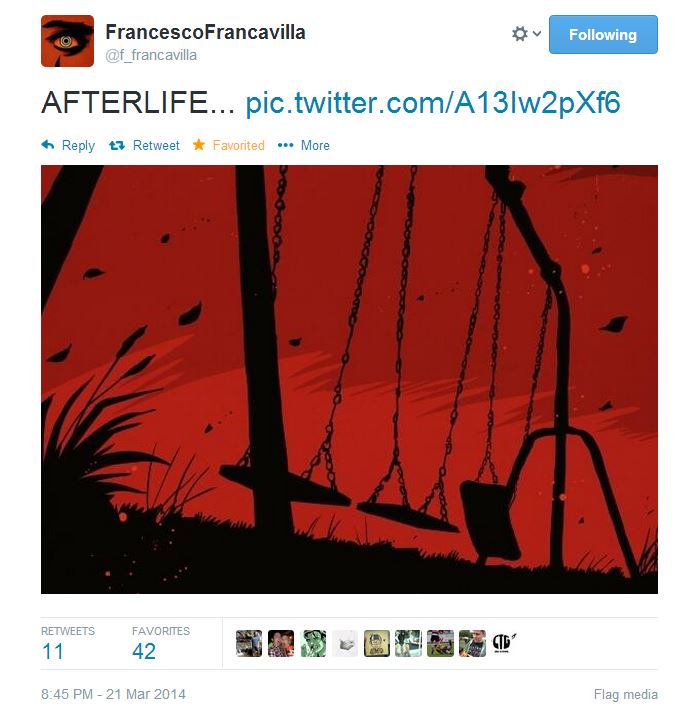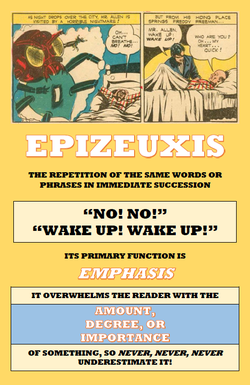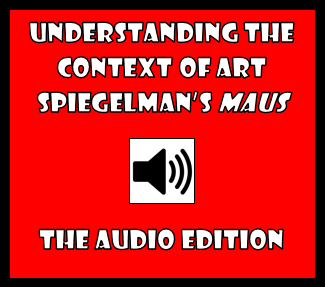More than Words
3/22/2014
Film, literature, Graphica, and How They Can Teach Us that Sometimes, the Less Said, the BetterI was reminded this past week that comics, indeed any sort of wordless visual narrative, can teach us how important it is when something is not being said. Now don't get me wrong. I love a good long story. The nearly one thousand pages of Dickens' Bleak House was enthralling for me as a graduate student. The twelve hours or so of the Lord of the Rings trilogy's extended edition was great fun. And I've watched a great number of musicals and plays with a pretty substantial running time and found myself amused, engaged, bewitched, and otherwise entertained from start to finish. But I'm also reminded of one of my favourite examples of flash fiction--attributed to Ernest Hemmingway though the connection is tenuous at best--that consists of but six words: Now I don't know if this story has the same impact on you as it had on me the first time I read it, but there is an economy about it that is startling, and so much of the story has been left unsaid that this economy has a profound effect on the reader. A couple of years ago I had a similar experience when a colleague showed me the short film below. It had won the Phillips Cinema "Tell It Your Way" Competition's Grand Prize. The rules of the competition dictated that the films being submitted could consist of no more than six lines of dialogue, and this submission, The Gift, took home the prize. If you've never seen this short film before and have now composed yourself after breaking down in tears at the end, we probably have quite a bit in common. This film only needs six lines of dialogue because the visual component of the narrative is so powerful. It is such a clever, well executed, and--as a result--profound piece of film-making. So what actually got me thinking about narrative economy? Well, not surprisingly, it was a wordless comic book panel drawn by none other than writer and artist, Francesco Francavilla. He was sending it around yesterday and it brought back to mind how powerful an image can be--how much it can actually say--in the absence of words telling me how to interpret it. Here's what he tweeted. I don't know about you, but this image just sort of sends chills through me. That's usually my reaction to things Francesco draws, but this one is especially so. It reminded me when I saw it of what an economy of words can do, and it should remind educators that those who would suggest that comics and graphic novels are a way of "dumbing down" the reading experiences we give to our students should, if anything, be pitied.
After all, think about what they're missing....
1 Comment
3/25/2014 10:26:28 am
One of my clearest memories of my own elementary school education was writing stories based on The Mysteries of Harris Burdick, which of course operates on a similar premise - a wealth of information contained with very few specifics that allow for tremendous interpretation. Again, Shaun Tan's The Arrival is similarly good at this.
Reply
Your comment will be posted after it is approved.
Leave a Reply. |
Glen DowneyDr. Glen Downey is an award-winning children's author, educator, and academic from Oakville, Ontario. He works as a children's writer for Rubicon Publishing, a reviewer for PW Comics World, an editor for the Sequart Organization, and serves as the Chair of English and Drama at The York School in Toronto. If you've found this site useful and would like to donate to Comics in Education, we'd really appreciate the support!
Archives
February 2019
|





 RSS Feed
RSS Feed
